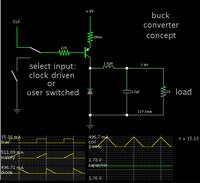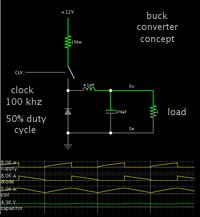vinayakdabholkar
Advanced Member level 4

Help needed--CMOS dc -dc convertor design M.E project
Hello , i am interested in designing a cmos dc- dc convertor for my project.Its titled "Design and analysis of interleaved multiphase dc-dc convertors"
i want to start with design of a synchronous buck and then compare it against an multiphase interleaved design
so what technology has to be used to design this and why ? e.g nanometer, micrometer
what should i look into before starting or how should i go about it ?
i am thinking about using ngspice to simulate the ckts
any reference material if suggested would be great help
Thank you
Hello , i am interested in designing a cmos dc- dc convertor for my project.Its titled "Design and analysis of interleaved multiphase dc-dc convertors"
i want to start with design of a synchronous buck and then compare it against an multiphase interleaved design
so what technology has to be used to design this and why ? e.g nanometer, micrometer
what should i look into before starting or how should i go about it ?
i am thinking about using ngspice to simulate the ckts
any reference material if suggested would be great help
Thank you




